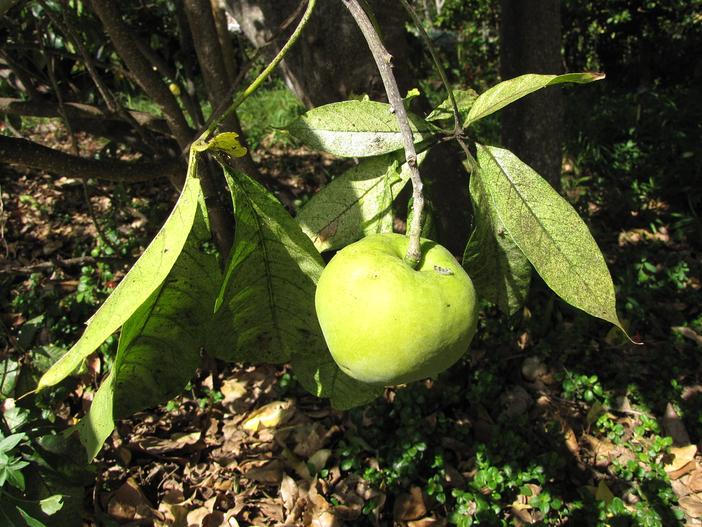White Sapote
(Casimiroa edulis)
White Sapote (Casimiroa edulis)
/
/

Forest and Kim Starr
CC BY 2.0

































Estimated Native Range
Summary
White Sapote is valued for its sweet, edible fruit and as an attractive ornamental tree. It is often used in tropical and subtropical landscapes, private gardens, and as a street tree in urban environments. The tree is relatively easy to maintain, requiring medium amounts of water and thriving in well-drained soils. It prefers full sun to part shade and is tolerant of different soil types, though it performs best in fertile, loamy soils. While White Sapote is not known for significant disease issues, it can be susceptible to root rot in poorly drained conditions. The tree is also frost-sensitive and should be protected from cold temperatures in cooler climates.CC BY-SA 4.0
Plant Description
- Plant Type: Tree
- Height: 25-50 feet
- Width: 25-30 feet
- Growth Rate: Moderate
- Flower Color: N/A
- Flowering Season: Fall, Winter
- Leaf Retention: Evergreen
Growth Requirements
- Sun: Full Sun, Part Shade
- Water: Medium
- Drainage: Fast
Common Uses
Bird Garden, Drought Tolerant, Edible*Disclaimer: Easyscape's listed plant edibility is for informational use. Always verify the safety and proper identification of any plant before consumption., Low Maintenance, Salt Tolerant
Natural Habitat
Highland forests and lowland plains of Central America and Mexico
Other Names
Common Names: Casimiroa , Mexican-Apple , Weiße Sapote , Cochilsapote , Zapote Blanco , Matasano , Pomme Mexicaine , Sapote Blanche , Sapoti , Vit Sapote
Scientific Names: Casimiroa edulis , Casimiroa sapota f. costarricensis , Casimiroa sapota f. glabrata , Casimiroa sapota var. villosa , Casimiroa sapota f. jaliscana , Casimiroa sapota f. macrocarpa , Casimiroa edulis f. microcarpa , Zanthoxylum araliaceum , Casimiroa sapota f. comitana
GBIF Accepted Name: Casimiroa edulis La Llave & Lex.